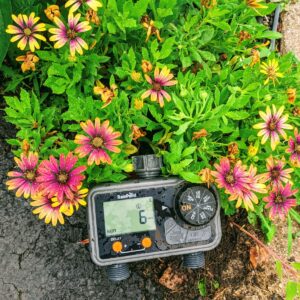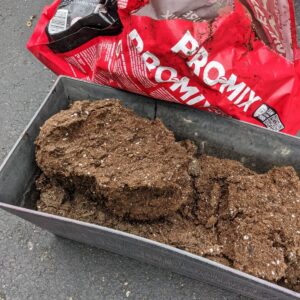Tomato Horn Worm (5 Tips) – Save the Tomatoes!
Imagine a blissful tomato jungle as far as the eye can see. Then suddenly, your favorite tomato plant is half gone! What gives?! The tomato horn worm can do serious damage to tomatoes in the garden, so be sure to act fast!
Tomato hornworms are the biggest caterpillars I’ve ever seen in my garden. They can rapidly devastate your crops if left to their own devices.
Act quickly to remove and prevent tomato horn worms from destroying your beloved tomato plants.
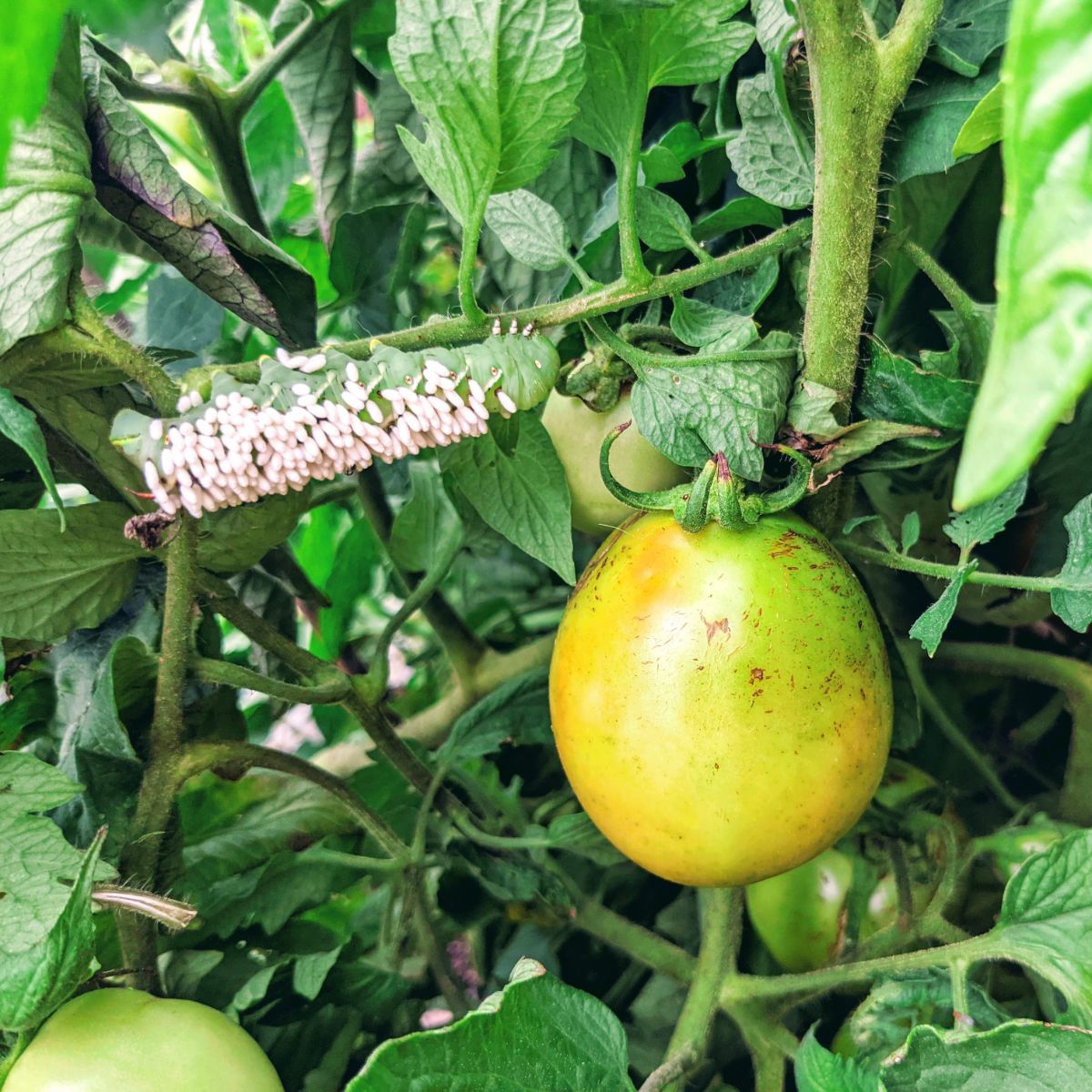
Here’s a little more info on the dreaded hornworm, followed by some practical tips.
What does the tomato horn worm look like?
Tomato horn worms are very large, bright green caterpillars with thin white and black markings and a horn at the back end. Hornworms also have markings that look much like eyes evenly spaced along the sides of its body.
What is the tomato hornworm lifecycle?
Tomato hornworms come from eggs laid by the five-spotted hawk moth. The hornworm eggs hatch into larvae (small caterpillars) and mature as larger larvae. Then, the hornworm larvae burrow in the ground to become a pupa and finally emerge as adult five-spotted hawk moths.
What is the tomato hornworm moth?
The scientific name of the tomato hornworm is Manduca quinquemaculata (Haworth). Boasting a camouflage blend of brown and gray, the mature adult is known as the five-spotted hawk moth.
The tomato hornworm moth is actually a kinda cool looking guy. It’s amazing he came from such a big, fat green tomato worm.
My youngest daughter and I saw a hornworm moth buzzing around zinnias in our flower bed in 2021 and thought nothing of it.
Then, I later learned it was the very creator of the dreaded tomato horn worm!
So how do you get rid of tomato horn worms? Let’s look at a creative approach to this common garden pest!
Hornworm Caterpillar Control
Have you found an enormous green caterpillar with horn creeping around your garden?
Most likely, you’ve seen him on your tomato plants, and that, my friends, is bad news.
A tomato horn worm can devour an entire tomato plant in record time. In fact, tomato horn worms can consume “up to four times their weight in leaves and fruit” daily! (University of Wisconsin-Madison / Wisconsin Horticulture Division of Extension)
Here are a few tips on how to get rid of tomato hornworms in the garden (and how to prevent them)!
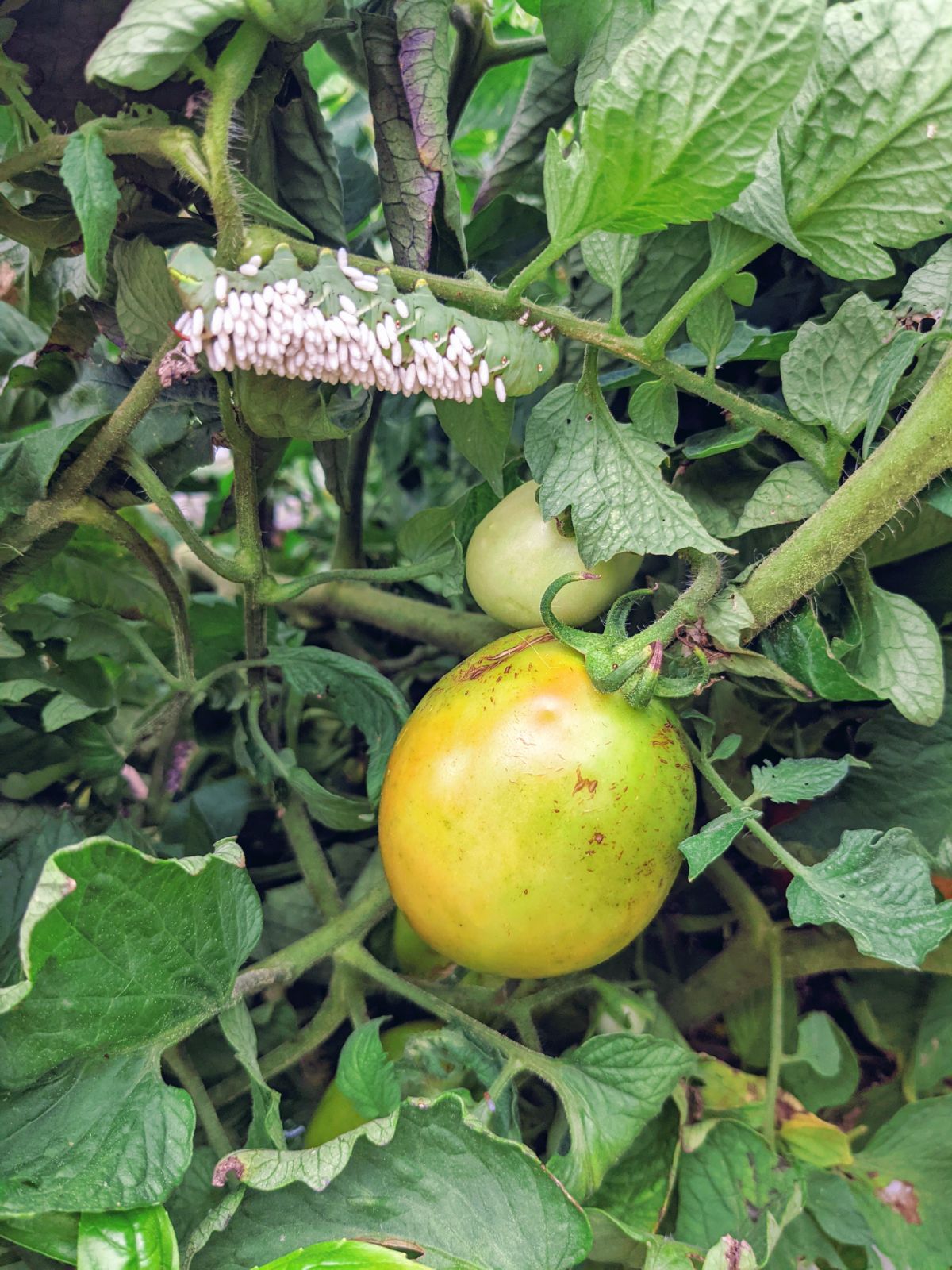
1. Manual Removal of Tomato Horn Worm
The most effective way to get rid of tomato horn worm may also be the simplest! Whenever you see one of these green horned tomato worms in your garden, swiftly remove it! You can throw it in the street for a hungry bird or otherwise disallow it from returning to your garden.
2. Deter the Tomato Hornworm Moth
Some anecdotal garden advice suggests that marigolds may deter the five-spotted hawk moth. Marigolds are touted as effective companion plants for many crops, so it’s certainly worth a try.
Traps using blacklights may also be a somewhat effective tactic to catch tomato hornworm hawk moths.
3. Learn What Hornworm Eggs Look Like
Tomato hornworm eggs are nearly perfect pearls of a translucent green color. The tomato moth lays anywhere from 1 to 5 eggs at a time, but as many as 2,000 over an entire lifespan. (Extension Master Gardener Volunteers of Durham County)
If you see hornworm eggs in the garden, be sure to remove them promptly!
4. Till the Soil and Look for Pupae
Because mature larvae pupate and overwinter in the soil, it helps to till or stir up your soil before planting each year. Remove and destroy any tomato hornworm pupae (or vine borer pupae) that you may find.
5. Attract Beneficials
One of the best things you can do to control tomato hornworms is to attract beneficial insects to your garden. Enter parasitic wasp!
The parasitic wasp lays its eggs directly inside caterpillars with an ovipositor. The larvae hatch and eat the caterpillar from inside while it essentially goes comatose. (Picture a zombie hornworm!)
Finally, the maturing parasitic wasp larvae spin their cocoons when they are ready to continue their lifecycle.
You can’t miss the tiny white cocoons on green caterpillars in your garden!
The parasitic wasps hatch from their small white cocoons and devour the tomato hornworm, saving your tomato patch!
This is nature at it’s finest.
Tomato Horn Worm Tips
It’s likely if you find a bright green caterpillar with horn in your garden that it’s this awful tomato pest.
The first time I saw one, I removed it and then felt guilty – I didn’t know what it actually was. My first impulse was to save my crops and then I worried it was a beneficial like some kind of butterfly.
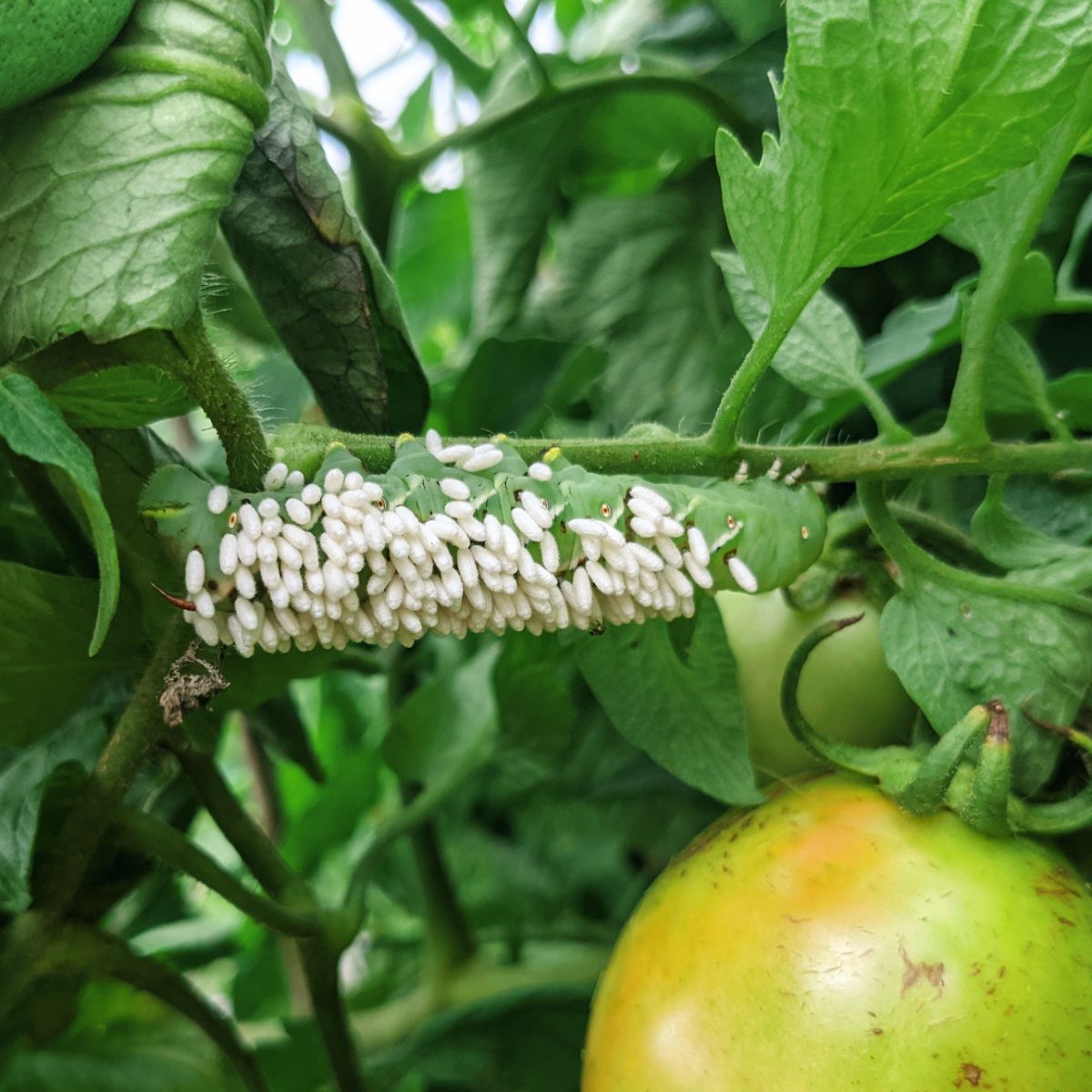
Thankfully, I made the right call!
So, if you find a big green caterpillar with horn on its backside, remember to act fast! At the very least, manually remove hornworms from the garden to save your tomato crop.
Do you have any other tips on controlling tomato hornworms? Feel free to ask any questions or share gardening stories in the comments below – we love hearing from you!
Happy Gardening!


